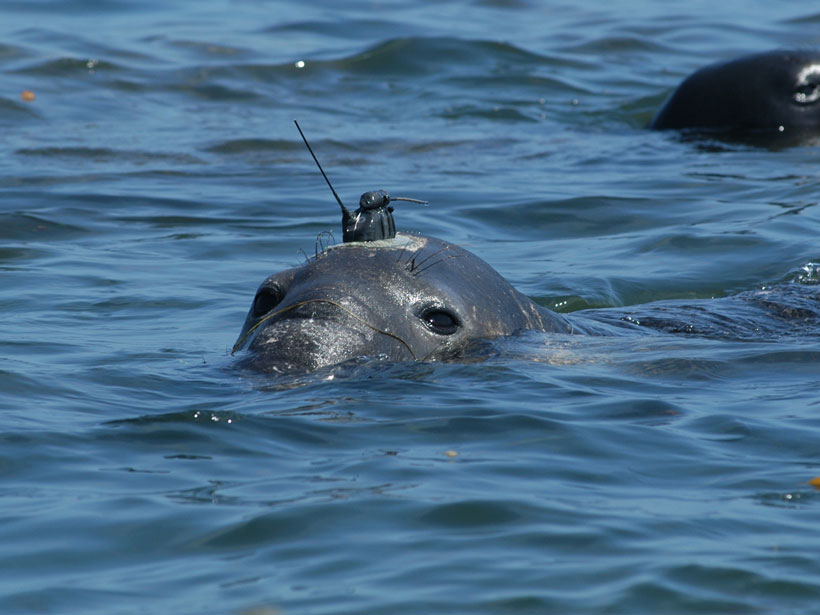A globally coordinated and sustained ocean observing system is urgently needed to systematically assess the status of the ocean’s biodiversity and ecosystems. Tracking how ocean life is responding to increased human use and climate change will enable the global community to effectively predict, mitigate, and manage our ocean. Monitoring scientifically and societally relevant biological essential ocean variables (EOVs) is expected to address these scientific issues and to support policy and management decisions.
More than 20 international, multidisciplinary experts met to design an observing system for these biological EOVs. Their tasks were to identify the existing monitoring backbone for each EOV, identify the extensions needed for these backbones for the next 10 years, and define the attributes of biological observing networks within a global system.

In addition, participants were asked to identify and prioritize implementation activities to ensure that products support monitoring progress against the 2050 Vision for Biodiversity from the Convention on Biological Diversity and the United Nations’ (UN) 2030 Agenda for Sustainable Development and contribute to the UN Decade of Ocean Science for Sustainable Development.
The monitoring backbone for biological EOVs consists of some well-established data collection networks and/or communities of practice, along with the facilities and platforms used for this purpose.
Currently, the monitoring backbone for biological EOVs consists of some well-established data collection networks and/or communities of practice, along with the facilities and platforms used for this purpose. These are quite heterogeneous in terms of capacity, implemented technologies, and data availability across and within variables—specifically across different geographic regions. Some countries conduct regular assessments of all types of organisms, some countries are more limited, and others have no regular assessment framework at all.
For the next decade, technological developments supporting increasingly automated measurements, as well as significant improvements in metadata and data architecture, will be crucial. Just as critical will be management encouraging marine scientists to make their data findable, accessible, interoperable, and reusable (FAIR). Common metadata standards that enable data reuse and interoperability will deliver the potential for scalability and sustainability. Monitoring frequency and spatial scale will depend on the biological EOV and questions to be addressed.
Observing networks will need effective coordination to provide frequency and coverage to address scientific questions relevant to national and regional policy and management priorities. Networks will require standard operating procedures, including technology transfer and in-country support to develop capacity, especially in developing nations.
The most pressing priorities to build a global monitoring system are to establish the leadership and partnerships that will agree on best practices and data architecture, plan their implementation, and communicate them broadly.
The most pressing priorities to build a global monitoring system are to establish the leadership and partnerships that will agree on best practices and data architecture, plan their implementation, and communicate them broadly. Addressing these priorities will lead to key technological objectives: cross-platform deployments enabling multivariable measurements, expanded sampling coverage to fill geographic gaps, improved compliance to quality control standards, and operational delivery of data and modeling products, including legacy data.
The development of new technologies and hardware, including increasing automation to bring the marine biological community closer to real-time ocean observing, will also be critical. Together, these improvements will support management decisions and increasingly detailed hypothesis testing.
The agenda, presentations, report, and list of participants are available on our website. We thank the National Center for Ecological Analysis and Synthesis and Future Earth for their sponsorship and participants for their contributions.
—Patricia Miloslavich ([email protected]), Institute for Marine and Antarctic Studies, University of Tasmania, Hobart, Australia; also at Departamento de Estudios Ambientales, Universidad Simón Bolívar, Caracas, Venezuela; Nicholas Bax, Institute for Marine and Antarctic Studies, University of Tasmania, Hobart, Australia; also at Oceans and Atmosphere, Commonwealth Scientific and Industrial Research Organisation, Hobart, Australia; and Erin Satterthwaite, National Center for Ecological Analysis and Synthesis, Santa Barbara, Calif.; also at Future Earth, Boulder, Colo.
Citation:
Miloslavich, P.,Bax, N., and Satterthwaite, E. (2019), Designing the global observing system for marine life, Eos, 100, https://doi.org/10.1029/2019EO127053. Published on 26 June 2019.
Text © 2019. The authors. CC BY 3.0
Except where otherwise noted, images are subject to copyright. Any reuse without express permission from the copyright owner is prohibited.

